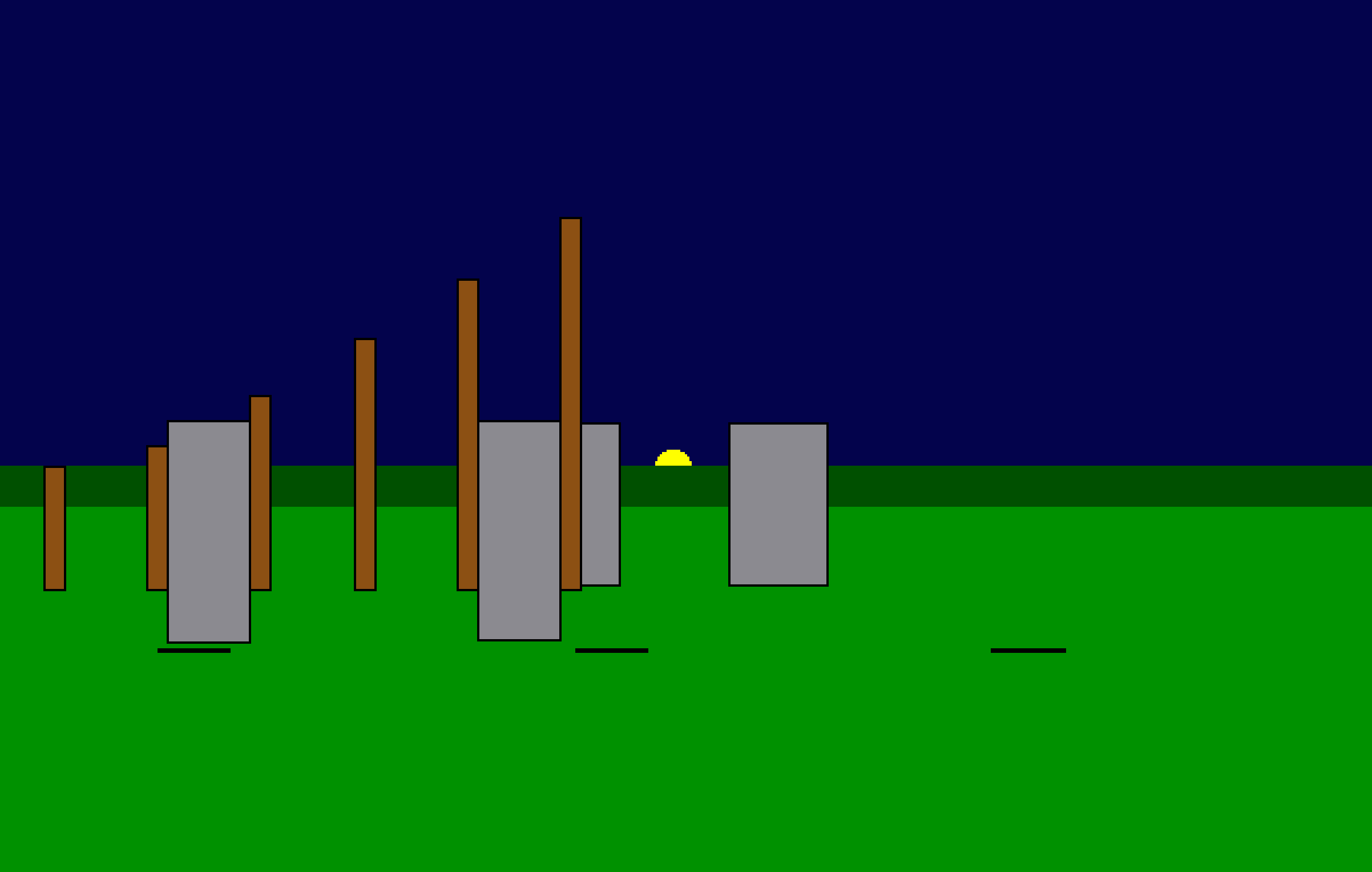Presentation of The Stonehenge Observatory. From Skynet University’s ASTRO 101 course.
The Stonehenge Observatory
This is a piece of software that I wrote between 1994 and 1998. I intend to have it re-written in a web-based format (and in higher resolution!), and offer it as an add-on to our ASTRO 101 course. Currently, I present it when I teach ASTRO 101, and it is one of my most in-demand public talks.
Public Talk Abstract
Using a three-dimensional computer recreation of Stonehenge, we will explore the site's astronomical properties, primarily by inserting ourselves into the simulation and watching solar and lunar alignments in real time, as they occurred thousands of years ago. The program recreates all three major phases of Stonehenge's construction based on archaeological records, and the sun and moon simulations take into account atmospheric refraction, the gradually changing tilt of Earth's axis, and the sun's gravitational tug on the moon to ensure the utmost in accuracy.
The summer solstice sunrise as viewed from the center of Stonehenge's first phase of construction, circa 3100 B.C.
Overview, From The Stonehenge Observatory’s Manual
The Stonehenge Observatory is the complete Stonehenge experience. No where else — not even at Stonehenge itself — can the site’s history and astronomy be explored in such great detail at the same time.
To begin with, The Stonehenge Observatory generates three-dimensional models of Stonehenge on your computer screen. These are not models of Stonehenge as they appear now, but rather, they are fully reconstructed models of Stonehenge as it appeared before thousands of years of neglect left the site in shambles. With just a few clicks of the mouse, the user may insert himself or herself into these simulations of Stonehenge and experience the site just as others experienced it thousands of years ago. Within these models, users have the freedom to stand at any location and to look in any direction. Climb atop the lintels of the stone circle, or fly over the site like a bird if you like!
In addition to being able to move through space, users have the freedom to move through time. Stonehenge underwent three major phases of construction over a 2000-year period. The Stonehenge Observatory generates fully reconstructed models of all three of these phases, each of which the user can jump into. Each reconstruction is based upon the decades of extensive archaeological research and excavation that have been carried out at Stonehenge. Furthermore the history of Stonehenge’s construction, as well as descriptions of the various peoples who actually built it, are chronicled in this unique computer manual. This history covers the expanse of 10,000 years — from Stonehenge of Mesolithic times to the Stonehenge of modern times.
The winter solstice sunset as viewed from atop the lintel opposite to the Great Trilithon of Stonehenge's third phase of construction, circa 2000 B.C. This alignment was not previously known when I first discovered it using The Stonehenge Observatory, in 1996.
Last — but certainly not least — is the astronomy. Only decades ago, it was first proposed that Stonehenge — whatever its primary purpose — at least additionally functioned as an ancient astronomical “observatory”. The argument was, and indeed still is, that Stonehenge, before falling into ruin, had alignments embedded in its architecture. An alignment consists of a marker, usually of stone, such that if looked upon by someone standing at the right place (such as Stonehenge’s center) on the right day (such as the first day of summer), he or she would see either the sun or the moon either rise or set directly over the marker (in this case, a sunrise). The suggestion that alignments once existed at Stonehenge triggered a fierce backlash from the archaeological community. However, over the years, archaeologists and astronomers have built many bridges over Stonehenge. Hopefully, The Stonehenge Observatory is the next step in the quest for common ground.
The Stonehenge Observatory allows users to explore the astronomical hypothesis to its fullest potential. In every simulation, the sun and the moon are present, and they progress across the screen in real time (or at any speed you like!) (To ensure the utmost in accuracy, the Stonehenge Observatory automatically accounts for such subtleties as atmospheric refraction, the gradually changing tilt of Earth’s axis, and the sun’s gravitational tug on the moon — every time its refreshes the screen!) By placing oneself into simulations at the proper times in history, alignments of major solar and lunar events can actually be observed — just as they appeared 4000 to 5000 years ago! Furthermore, the “proper times” of all of these events — including solar eclipses — have been determined by The Stonehenge Observatory and are easily accessed by the user. However, the most important feature of this software is that users need not have any previous background in astronomy — none whatsoever — to make the “observatory” function. Everything one needs to know is explained in an elementary and highly interactive fashion within the Stonehenge Astronomy section of the this computer manual.
The moon over Stonehenge's second phase of construction, circa 2150 B.C.
Whether your interest is in history, astronomy, archaeology, anthropology, architecture, mythology, or even computer science — or if you simply want to stroll around the site — The Stonehenge Observatory definitely has something for you!




